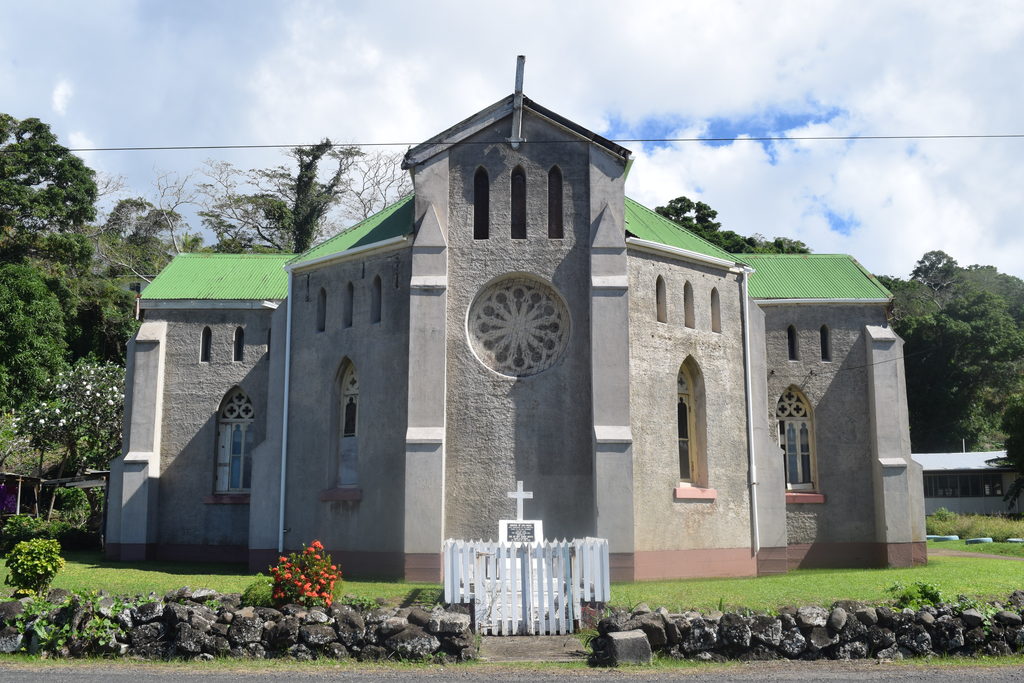THE American Civil War increased the demand for cotton cultivation and supply around the world.
As a result, prospective Europeans flocked to Fiji in droves during the period of British rule, eager to set up plantations and make quick “big bucks”.
However, they found the use of indigenous labourers unsuitable for their commercial ventures.
So in the 1800s, the recruitment of workers from other parts of Melanesia became an entrenched industry. Ships from Australia transported labourers for farms in Queensland and Fiji.
Ship captains were paid around five shillings per person in incentives, while ship owners sold labourers for anywhere between £4 and £20 per head.
Historical records say Melanesians were dropped at their designated destinations with printed metal discs. These were worn around their necks so their respective buyers could easily identify them.
In Fiji, this form of 19th and 20th-century human trafficking, known as blackbirding, started when the first lot of labourers were brought in from New Hebrides (Vanuatu) and the Solomon Islands to work on cotton plantations.
On July 5, 1865, the licence was received for the supply of 40 labourers. This sparked a stream of voyages carrying people of Melanesian descent who were recruited by deceit and trickery to work on Fiji plantations.
When the blackbirding era ended sometime in the 1930s, labourers who did not return to their home country were left “landless, homeless, workless, stateless and without leaders” in Fiji.
It is understood the Chief Justice at the time drew the plight of these Melanesians to the attention of a man named William Floyd, an Irish Anglican priest who later became the pioneer of the Anglican community in Levuka.
He took up his first posting in the old capital towards the end of 1870. His job was to provide pastoral care to both the white settlers and Solomon Islanders.
Floyd accepted the challenge with great vigour and commitment. This is how Solomon Islanders later came under the protection of Anglican Church, their intermediary with the Government over many years.
That relationship remains today.
Records show Floyd later purchased land above the current church site, at Wailailai in Onivero, somewhere beyond Vagadaci, and settled the Melanesian labourers there. Many of their descendants have lived in the vicinity ever since.
Years later, as a direct result of Floyd’s perseverance and intervention, the foundation stone of the Church of the Holy Redeemer in Levuka was laid on Sunday, August 13th, 1899. The church served the landless Solomon Islanders and that complex relationship continues today.
Today, the church stands at the northern end of Levuka, a living testament of the hard work paved by Anglican missionaries during Fiji’s formative years.
In its early days, as is the case today, the church was a masterpiece and a beautiful inspiration to the people of Levuka, Fiji and the Pacific. Even today, at 115 years old, she sits pretty and somewhat basks in the same youthful elegance of her early days.
In the early 1900s, it was regarded as “one of the most beautiful consecrated buildings in the South Seas in its setting of green lawns, hibiscus, frangipani and waving palms”.
From the seawall, the Church of the Holy Redeemer, which is built in the traditional shape of a cross facing the rising sun, seems like a small castle, a miniature of the kind you’d find in Elizabethan movies.
Its exterior is largely dull, with green roofing that breaks its monotonous grey.
Entering the church, however, is like being transported to a different realm, teeming with vibrant colours, work of art and biblical imagery.
It is said its collection of stained glass was sourced from far-flung Belgium and France and emulates the magnificent illuminated wall decorations of the middle ages.
A couple of stained glass designs offer visual narratives of Bible stories and characters a technique used in olden days to elevate the mind to moments of deep devotion and meditation.
As soon as one enters the church, a white holy water font greets the worshiper, reminding his or her of the need to cleanse the heart and mind as one enters the Lord’s holy sanctuary.
Slightly above the altar, you will find a Rose Window, whose design seems like the Rose of the Chartres Cathedral in France gifted by Blanche of Castile, the Queen of France who was married to Kind Louis VIII.
The Rose Window was donated by Floyd as a memorial to his “little, but seemingly fearsome, mother, who spent time with him in Levuka, but found the climate oppressive”.
Floyd remained a bachelor in life.
A keen greens keeper, he is believed to have introduced to Fiji the red frangipani and the pomegranate.
“The grounds were well laid out in a perfect quadrangle, the church on the north side, properly orientated, the vicarage faced across to the church on the south side…,” CW Whonsbon Aston said in his description of the church in the publication “Pacific Irishman”.
“…the volcanic black cliffs, covered with wild sage, formed the west side and the old stone wall, very much like those of Ireland, and the Beach Road and sea, on the east.”
The Church of the Holy Redeemer is a place worth visiting when you are in Levuka. It is not only magnificent in looks, it reminds us of how the war in the American continent influenced world trade in cotton and eventually brought Solomon Islanders to Fiji.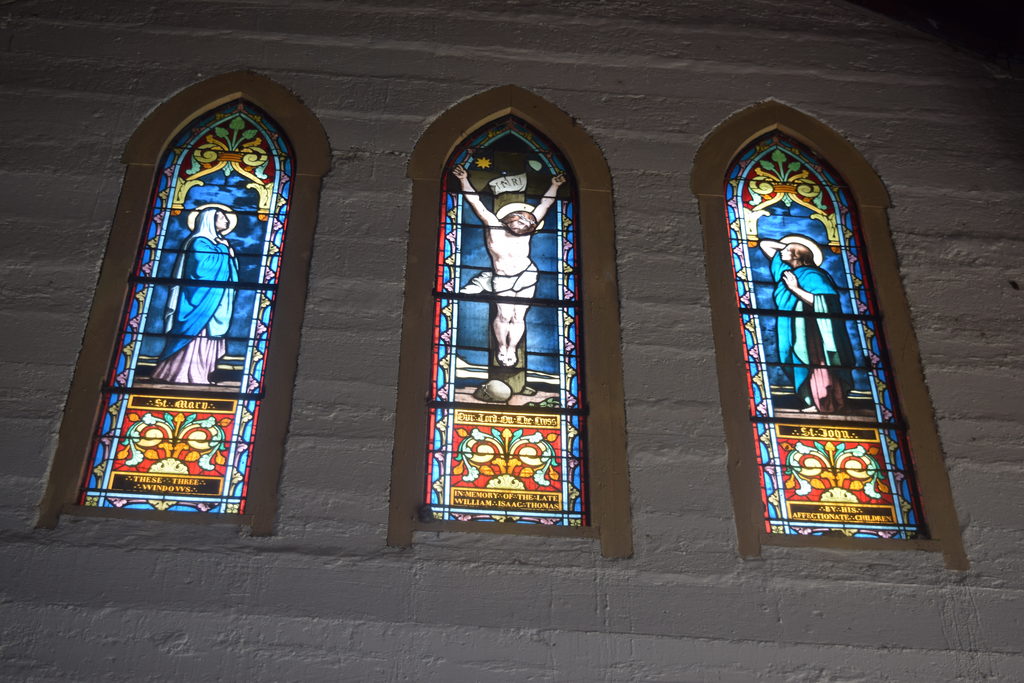
Biblically-inspired stained glass windows. Picture: JOHN KAMEA
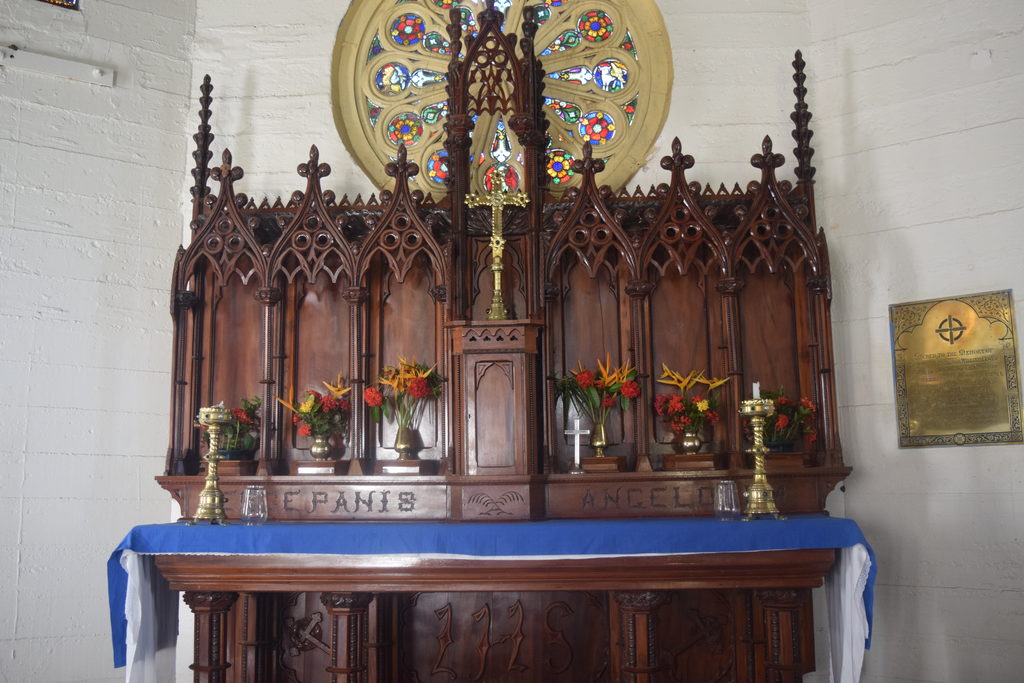
The altar area of the church. Picture: JOHN KAMEA
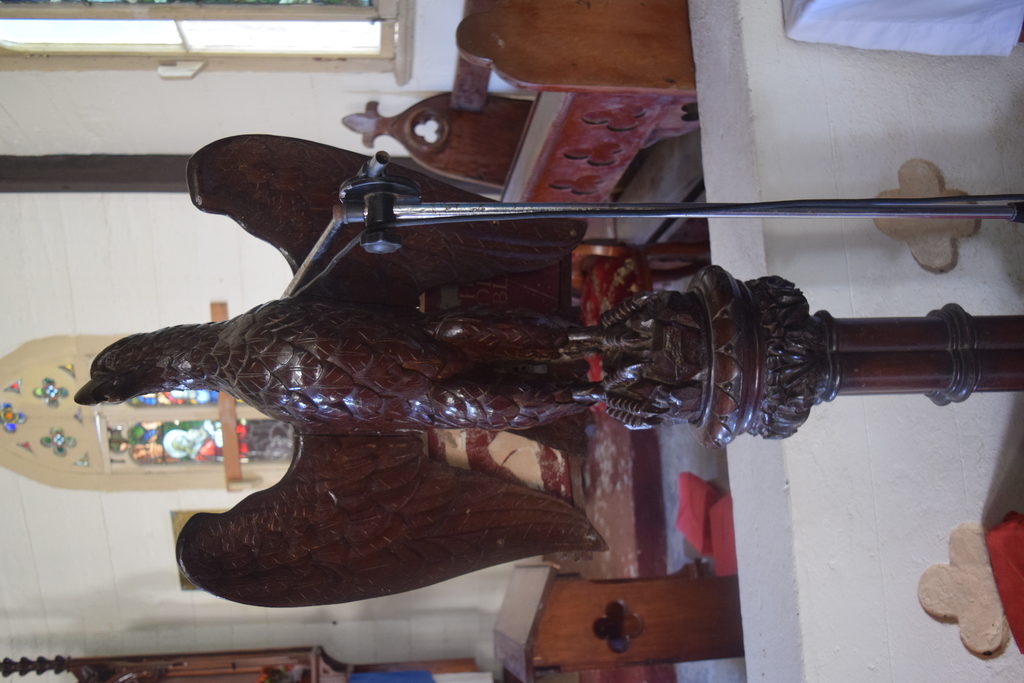
An eagle stand carved out of hardwood.
Picture: JOHN KAMEA
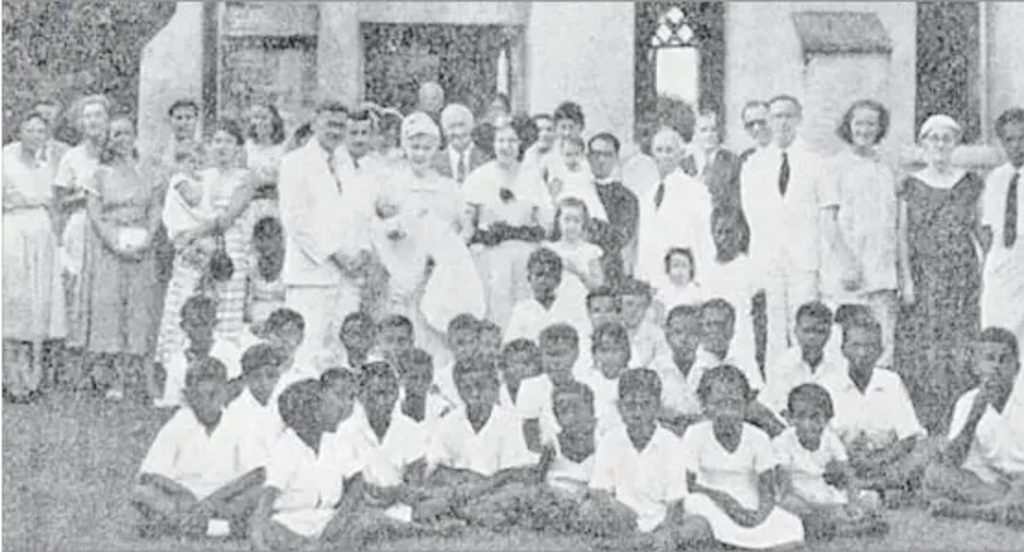
An undated photo of children of Solomon islanders and members of the Church of the Holy Redeemer during the colonial days. Picture: SUPPLIED

